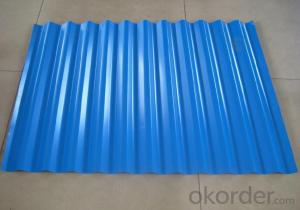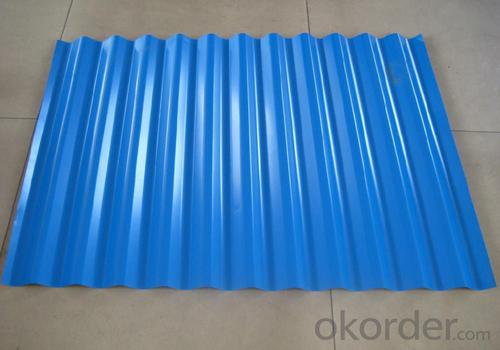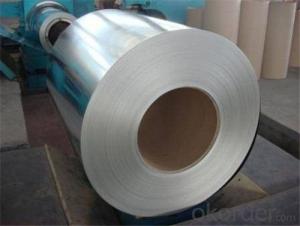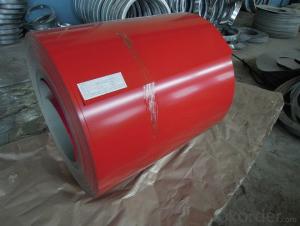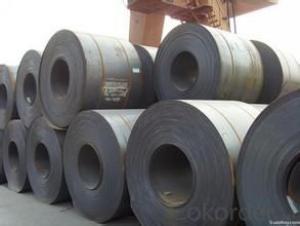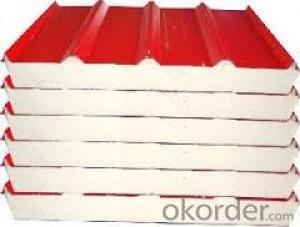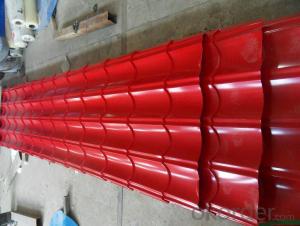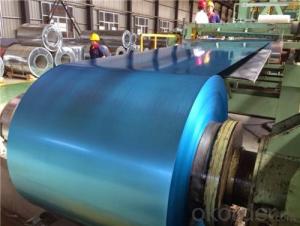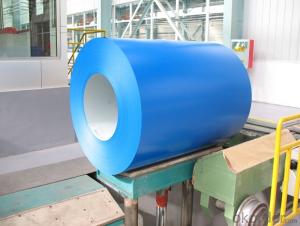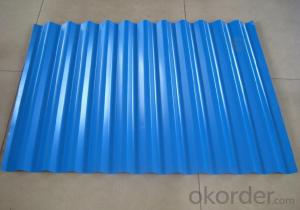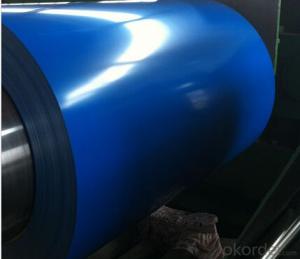Pre-Painted Galvanized/Aluzinc Steel Roof of Origen of China
- Loading Port:
- Tianjin
- Payment Terms:
- TT OR LC
- Min Order Qty:
- 50 m.t.
- Supply Capability:
- 10000 m.t./month
OKorder Service Pledge
OKorder Financial Service
You Might Also Like
1. Pre-Painted Galvanized/Aluzinc Steel Roof Description:
With GI as base material, after pretreatment (degrease and chemical treatment ) and liquid dope with several layers of color, then after firing and cooling, finally the plate steel is called pre-painted galvanized (aluzinc) steel. Pre-painted galvanized roof is good capable of decoration, molding, corrosion resistance. It generally displays superior workability, durability and weather resistance.
2.Main Features of the Pre-Painted Galvanized/Aluzinc Steel Roof:
• Excellent process capability
• Smooth and flat surface
• Workability, durability
• Excellent heat resistance performance
• High strength
• Good formability
• Good visual effect
3.Pre-Painted Galvanized/Aluzinc Steel Roof Images
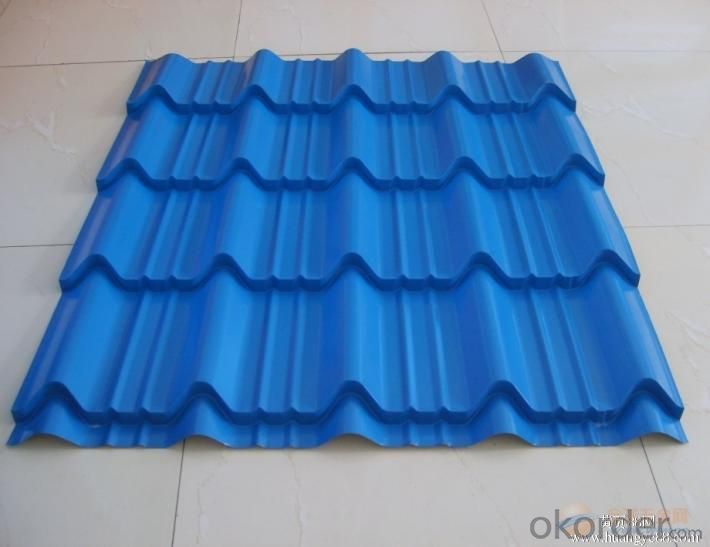
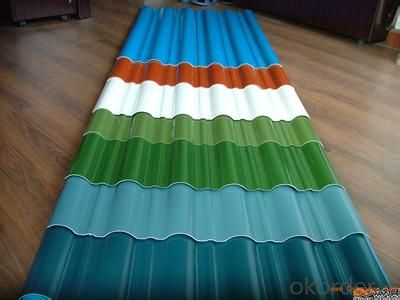
4.Pre-Painted Galvanized/Aluzinc Steel Roof Specification
Standard: AISI, ASTM, BS, DIN, GB, JIS
Grade: SGCC SGCH SGCD DX51D
Thickness: 0.13-3.0mm
Model Number: AISI, ASTM, BS, DIN, GB, JIS
Surface Treatment: Galvanized
Application: Container Plate, panel sandwich
Width: 30-1500mm
Color: RAL color
5.FAQ of Pre-Painted Galvanized/Aluzinc Steel Roof
What’s the brand of the paint?
We use the best brand of all of the word—AKZO.
What’s the wet and heat resistance of the roof?
More than 1000 hours.
Which payment term we can do?
L/C at sight or T/T.
Where is our factory?
Near by Tianjin and Shanghai.
What is the mininum quantity of every order?
50 tons.
- Q: What is the role of steel coils in the oil and gas industry?
- The oil and gas industry heavily relies on steel coils, which have a crucial role to play. These coils are primarily utilized for the transportation and storage of oil and gas products. Typically, they are crafted from high-quality steel and designed to endure the harsh conditions encountered during the extraction, processing, and distribution of oil and gas. One of the key functions of steel coils in this industry is to serve as containers for transportation purposes. Oil and gas are frequently transported over long distances, either through pipelines or tankers. Steel coils are used in the construction of these pipelines and storage tanks, providing a robust and secure means of transporting these valuable resources. The strength of steel ensures that the pipelines and storage facilities can withstand the pressure and temperature fluctuations that occur during transportation. Steel coils also play an essential role in the production of drilling equipment. The drilling process involves extracting oil and gas from deep underground reservoirs. Steel coils are employed in the manufacturing of various components of drilling rigs, including pipes, casings, and wellheads. These components must be capable of withstanding the high pressures and temperatures encountered during drilling operations. Steel coils offer the necessary strength and durability to ensure the reliability and safety of drilling equipment. Additionally, steel coils are utilized in the construction of offshore platforms, which are bases for drilling operations in offshore oilfields. The severe marine environment, characterized by saltwater exposure and strong winds, demands materials that can resist corrosion and provide structural integrity. Steel coils are used to fabricate the structural components of these offshore platforms, ensuring their ability to withstand the challenging offshore conditions. In conclusion, steel coils are indispensable in the oil and gas industry. They are employed for the transportation and storage of oil and gas products, the construction of pipelines and storage tanks, the manufacturing of drilling equipment, and the fabrication of offshore platforms. The strength, durability, and resistance to harsh conditions make steel coils an essential material in this industry.
- Q: i'm looking into buying a stainless steel ring for somebody as a gift.i'm on a budget (heh) and the ring is about $50.will it rust or tarnish? it'd be embarrassing if i gave it to someone, and it begins rusting :Pthanks
- Stainless steel is a generic term for a huge variety of different alloys. In manufacturing, each steel has different numbers, etc that they go by. Some steel sold as being stainless actually is not. It rusts, like the cheap kitchen knives you see that are left in the sink too long. However, the stainless in jewelry is pretty legit. Overpriced, but legit. It will not tarnish, but it won't stay shiny forever. It might get a little less glossy over time. When it does get re-polished, it takes a long time to do it. But it will not turn black or rust. Good luck.
- Q: Is Ace Steel's wrestling school still running?And do you know if their are any other wrestling schools in chicago?
- Steel Domain
- Q: What are the different types of edge conditions in steel coils?
- There are several types of edge conditions that can be found in steel coils. Some common examples include mill edge, slit edge, and sheared edge. The mill edge refers to the original edge of the coil as it comes from the steel mill, which may have a rougher or irregular appearance. Slit edge is created when the coil is slit into narrower widths, resulting in smoother and more precise edges. Sheared edge is produced when the coil is cut using a mechanical shear, typically resulting in a straight and clean edge. These different edge conditions can have varying effects on the performance and appearance of the steel coils in different applications.
- Q: How are steel coils used in the production of electrical devices?
- The production of electrical devices heavily relies on steel coils. These coils, typically made from high-quality steel, are precisely wound into a circular shape. They have a crucial function in various electrical devices, including transformers, motors, generators, and inductors. Transformers, for instance, heavily rely on steel coils. These devices are essential for adjusting voltage levels in electrical circuits. They consist of two separate coils, the primary and secondary coils, which are wound around a magnetic core. The steel coil plays a vital role in providing stability and support to the windings, ensuring proper alignment and preventing any deformation. Moreover, the high magnetic permeability of steel helps enhance the efficiency of energy transfer between the coils. In motors and generators, steel coils are utilized to create magnetic fields that either generate mechanical energy or convert it into electrical energy. These coils are wound around an armature or rotor, which rotates within a magnetic field created by a stator. As the current flows through the coils, a magnetic field is produced, resulting in the rotation of the armature or the generation of electrical power. Steel coils are also used in inductors, another type of electrical device. Inductors consist of a coil of wire wound around a core material, often made of steel. Steel coils in inductors help increase the inductance, which measures the device's ability to store energy in a magnetic field. By storing energy in this manner, inductors can regulate currents, filter out noise, and provide stability to electrical circuits. All in all, steel coils are indispensable in the production of electrical devices. They provide stability, support, and enhance the necessary magnetic properties for efficient functioning. Without steel coils, the performance and reliability of electrical devices like transformers, motors, generators, and inductors would be greatly compromised.
- Q: What are the different methods of leveling steel coils?
- There are several different methods of leveling steel coils, including roller leveling, stretcher leveling, and tension leveling. Roller leveling involves passing the coil through a series of rollers to flatten it. Stretcher leveling uses a hydraulic stretcher to stretch the coil in order to remove any residual stresses. Tension leveling involves applying tension to the coil while passing it through a series of rollers, which helps to eliminate any waviness or unevenness.
- Q: How are steel coils used in the agricultural industry?
- Steel coils are commonly used in the agricultural industry for various purposes, such as manufacturing equipment like plows, harrows, and cultivators. They are also used for constructing storage structures like grain bins, as well as fencing and livestock enclosures. Additionally, steel coils are used in the construction of agricultural machinery and vehicles, ensuring durability and strength in demanding farming conditions.
- Q: Which one would be stronger? And should damascus steel be tempered?Thank You
- Damascus steel is not a good choice. Gun barrels were once made of Damascus but no longer. Mono steels have come a long way in the past 100 years along with methods of tempering. The skill required to create a functional, strong, and safe Damascus steel sword is rare and extremely labor intensive. A cheap Damascus sword should never be used for cutting anything but air. While you can buy a fine Damascus sword expect to pay a high price. Although any fine sword will cost quite a bit, $500 to thousands. Modern Mono steels now out perform even traditional folded blades. Folding was to change the carbon content and not primarily for strength. Lots of info on the web, make sure to check it for yourself and don't believe the romantic notion that antique blades out perform anything made today. That's just not true.
- Q: What are the different types of steel coil surface treatments?
- There are several different types of steel coil surface treatments, including hot-dip galvanizing, electro-galvanizing, powder coating, and organic coating.
- Q: i am working a client.my vendor specified in pipe specification pipe line class as MS1 (code for Mild steel)but assigned material to this code is cs smls astm A 106B.my question is any difference between CS and MS material?pls suggest me
- CS is a noxious gas that I have tasted. If it is spec mild steel then do so.
Send your message to us
Pre-Painted Galvanized/Aluzinc Steel Roof of Origen of China
- Loading Port:
- Tianjin
- Payment Terms:
- TT OR LC
- Min Order Qty:
- 50 m.t.
- Supply Capability:
- 10000 m.t./month
OKorder Service Pledge
OKorder Financial Service
Similar products
Hot products
Hot Searches
Related keywords
